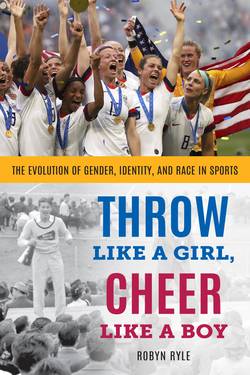Читать книгу Throw Like a Girl, Cheer Like a Boy - Robyn Ryle - Страница 12
На сайте Литреса книга снята с продажи.
The Cold War and Women’s Competition
ОглавлениеThe idea that competition was bad for women in sports began to change after World War II, and that happened in part because of the Cold War. This sustained political hostility that existed between the United States and the Soviet Union throughout the second half of the twentieth century created increased competition at many levels around the globe. Which country could boast the greatest economic prosperity? Which country could get to the moon first? Which country could win the most medals at the Olympic Games? This last competition dictated that women in the United States step up their sports game. The previous era, with its emphasis on cooperative play days, gradually disappeared in favor of programs that could produce elite female athletes—athletes who could show the Soviet Union and other Communist countries the inherent superiority of American democracy. Women’s sports became more competitive in order to help the United States win the Cold War by accumulating as many Olympic medals as possible.[16]
In the same time period, women also started participating in a small number of professional sports. The Ladies Professional Golf Association (LPGA) was founded in 1950, making it the oldest women’s professional sports league still in existence.[17] Made famous by the movie, A League of Their Own, the All-American Girls Professional Baseball League was created in 1943. The league was meant to fill the void in the baseball world left by the many men who were serving overseas. The league lasted until 1954, when a lack of audience and financial struggles forced the AAGPBL to shut down.[18]
Women would play golf and baseball professionally in a gender-segregated environment, but in the world of Formula One motorsports, women raced alongside men. Maria Teresa de Fillipis competed in Formula One racing in 1958–1959.[19] In the National Association of Stock Car Auto Racing (NASCAR), Sara Christian finished 14th out of 33 drivers in the NASCAR’s first strictly stock car race in June 1949.[20] Lula Olive Gill and Ada Evans were riding horses and winning races right beside men early in the twentieth century in thoroughbred racing, and their successes came long before Kathy Kusner became the first licensed jockey in 1969.[21] These sports demonstrate that it is possible for women and men to play together and compete against each other in the same sport.
